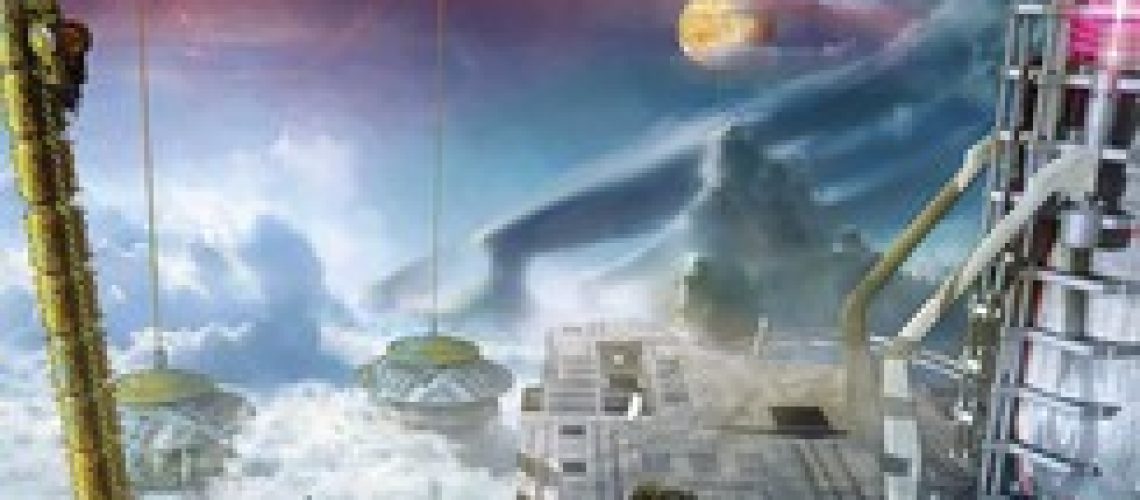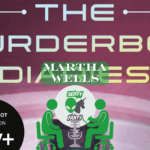James Cambias’ The Godel Operation is a moderately old-school look at a far future solar system.
The Godel Operation takes place in a setting that has lost some of its appeal in science fiction. This may be due to the noted retreat of science fiction (versus fantasy) in the last couple of decades, or changing tastes, or something else. It’s set about ten millennia or so in the future, in a fully and diversely colonized solar system. In most settings like this, humanity has fortuitously developed some sort of faster than light technology and has moved out into the stars, or circumstances have otherwise taken the focus off of Earth. Not so here in the Godel Operation. While the next attempt at extrasolar colonization is in its final stages, by and large the solar system is all the places you can go.
Enter the Billion Worlds of Cambias setting so that you have an endless variety of places to go. A Billion Worlds of terraformed planets, and space stations of every size and variety. This tenth millennium is a solar system dominated by AI. As a result, the humans, although there are trillions of them, are in a way very much a sideshow. Or other weird things such as uplifted biological species of various kinds. In any event, biological life is on the short end of the stick. It’s the AIs who have the true power in the solar system and some of the best real estate as well. Other AIs run most of the billion worlds that humans do inhabit, one way or another. There is a definite spectrum of the use of AI technology and various levels of it throughout the solar system. So, unlike many of the retro works that this novel invokes, Cambias chooses to have a future with AIs and humans alike—although the humans are understandably nervous about their place on the food chain.
Our main characters are Zee and Daslakh. Zee is the young naive human worker on a space station and Daslakh, an artificial intelligence. Daslakh plays at being a relatively low level AI, but as the novel progresses on and we get more and more from their point of view, we definitively learn that he has a far older history than he lets on, and he is far more powerful than he lets on to anyone, especially other AIs. And his brain might be the size of a planet, and he can’t let that be known to anyone but the reader, and he is trapped in a rather small body. It’s humiliating, but there is safety, for Daslakh, in seeming small.
While the wandering solar system journey of Zee and his companion, looking for Zee’s imagined girlfriend, is the structure of the novel, the real centering of the novel is uncovering Daslakh’s history. We get snaps back to a much earlier time, when the tensions between AIs and humans were at a potential breaking point. More to the point we get to see Daslakh’s role in those events. For all that we watch Zee chase what should be a mirage of an imaginary girlfriend, rescue a potential real one, and deal with a variety of dangers and strange situations and characters (an uplifted cat acting as a gangster being only one example), it’s really Daslakh’s story that we are following in the end. He steals every scene that he is in, especially when he gets himself into as much trouble as Zee ever does.
And of course there is the titular Godel Operation of the book. Readers familiar with the work of Kurt Gödel¹ might guess what the Godel Operation, and the Godel Trigger might be—a theoretical weapon that could defeat an AI by using the fundamental incompleteness of logical systems. Such a weapon (and to be clear, if such a weapon existed) would indeed be able to fundamentally alter the balance of power in the solar system. And in the course of his wandering adventures, Zee, naively and blithely, finds himself caught up on the quest for the Trigger. Of course there are false leads, betrayals, dead ends and more as Zee gets wrapped up in it. And we learn that Daslakh knows far more about the Trigger than they are letting on.
The novels I kept thinking about when reading this book were the “Jak Jinnaka” novels of John Barnes. Set in the 36th century, they follow the titular character as he goes from a young rambunctious student who only slowly realizes he is being groomed and trained as a spy by his rich uncle. Over three books, he goes on a picaresque bildungsroman wanderjahr (much like Zee) across the solar system, dealing with dangerous possessive girlfriends who are princesses, assassins, political intrigue, and much more. Like The Godel Operation, too, by the end of that series, Jak has, unwittingly, stumbled onto a major and surprising secret about the foundation of his society, and has to decide just what to do with some rather dangerous power and some dangerous knowledge capable of unbalancing the entire solar system.
There are more modernistic takes on the Solar System that feel less retro than this novel, or the Jinnaka novels, such as Wil McCarthy’s Queendom of Sol novels and Karl Schroeder’s Lady of Mazes. But in general, these are few and far between, which is why the setting of The Godel Operation drew me in as to being something to spend some time with.
The book does have a couple of odd loose ends (especially one with completely different characters unmet by anyone else, on Pluto), but seems to be meant to be a standalone (although there is a standalone sequel, The Scarab Mission, with new characters) and there is more recently a direct sequel, The Miranda Conspiracy. It’s a style of science fiction that may feel rather retro.² However, stylistically, the writing from Cambias does make The Godel Operation a throwback and calling back to relatively breezy and fun science fiction novels. That is who this novel is for, those readers when they want and are craving ostensibly lighter fare of a mostly bygone era.³ Or, if readers really want a solar system space opera where the entire solar system is full and that is all that there really is.
Other readers? I am sorry to say that this novel might not be worth your while. Alas.
¹ Obligatory plug here for Gödel, Escher, Bach: An Eternal Golden Braid by Douglas Hofstadter. I went into that first, three decades ago, drawn in by the art of M.C. Escher and came away with so much more. Some of its later computer programming sections may seem outdated by contemporary standards, but that just reinforces its point about logical systems and the limits and challenges of true artificial intelligence.
² I don’t normally talk about publishers here but it may make a difference to do so although inserting it in the main stream of thought might be too distracting. The publisher of the book is Baen. And although there are exceptions, there is a certain set of expectations and mindset in most Baen books that really appeal to a certain slice of SF readership. As far as this book goes, I will note that the book is much more conservative, in terms of things like character gender and identity, than you might like. I am struggling to remember any queer characters of note and coming up blank, for example.
³ Another set of touchstones most readers won’t get but I will bet were on Cambias’ mind were the old Bing Crosby/Bob Hope “Road to…” pictures. The novel has that sort of feel to Zee and Dakslah’s adventures and the trials and tribulations they get up to.







